Freelance Graphic Design: Establishing Your Career and Client Base
Introduction
Freelance graphic design is a dynamic and constantly changing industry. As a freelance graphic designer, you are able to work on your own schedule, select your clients, and establish a schedule that suits your needs.But freelance graphic design success comes with a strategy, from creating your portfolio to managing good client relationships. This blog will walk you through the key steps in setting up and developing your career as a freelance graphic designer and successfully managing client relationships.

With the advent of remote work and online platforms, the need for freelance graphic designers has grown considerably. Businesses are looking for experienced designers who can design innovative and captivating graphics that reflect their brand image. This change has offered freelancers immense opportunities to promote their creativity and skills globally.
Also, being able to modify your client needs and industries is a critical component of success as a freelance graphic designer. Having an insight into the trends of the market, being abreast with design software, and constantly improving your skills will keep you well ahead of the game. Having a good professional network and engaging in long-term client relationships will be a major component of success in the ever-changing landscape of freelance graphic design.
Understanding Freelance Graphic Design
Freelance graphic design is all about working for yourself as a designer, providing creative services to different clients but not being stuck with one single employer. Freelance graphic designing allows you to work with agencies, businesses, startups, and individuals who require visual communication services. This may involve logo creation, branding, web development, social media images, and so on.
Steps to Establish Your Freelance Graphic Design Business
1. Learn Strong Graphic Design Skills
Before embarking on freelance graphic design, it is important to develop your design skills. Learn software such as Adobe Photoshop, Illustrator, InDesign, and other design industry-standard tools. Learn the current design trends and keep developing your knowledge of typography, color theory, and composition of layout.
Apart from technical ability, it is also important to develop an astute sense of aesthetics and functionality. Knowing the psychology of design decisions, like color effect and user experience, can make your work more efficient and effective.
Reading good design case studies and participating in online design forums can provide inspiration and insights to hone your creative strategy.
The other useful skill in freelance graphic design is being adaptable. Each client has various tastes and branding requirements, and being flexible with your design style will enable you to serve a wider clientele.

2. Build a Dazzling Portfolio
Your portfolio is the strongest weapon for freelance graphic design. It presents your work, ideas, and previous projects to your potential clients. A well-structured portfolio should contain:
An array of design projects (logos, brochures, websites, etc.)
Strong visuals and case studies.
Positive testimonials from clients.
An easy-to-use website or Behance/Dribbble profile.
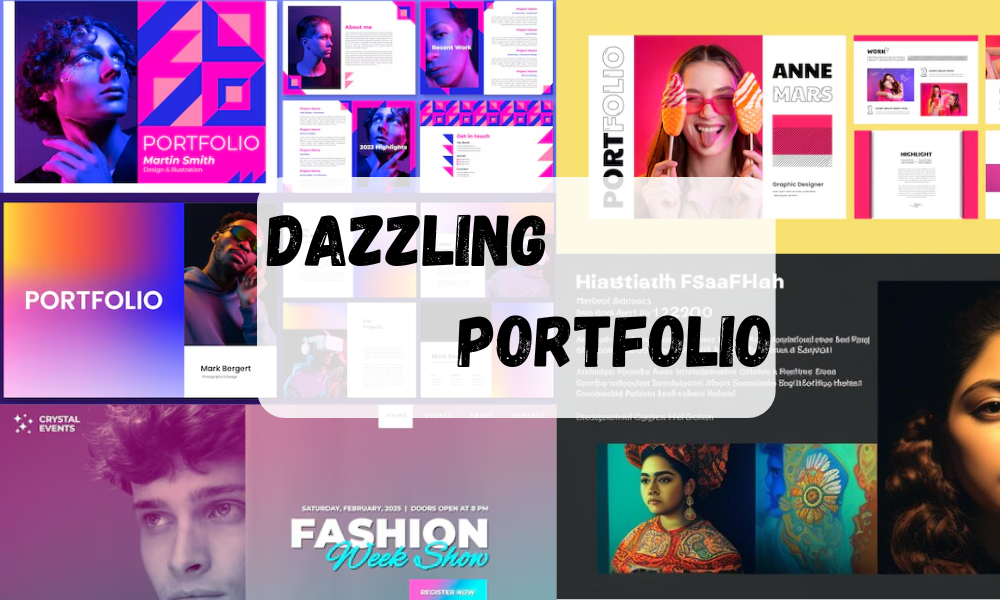
3. Establish Your Freelance Business
Operating a freelance graphic design business entails more than simply designing. You must have a strong foundation by:
Registering your business (if needed).
Establishing contracts and terms of payment.
Selecting a professional name and branding.
Establishing an invoice and pricing scheme.

4. Find Clients and Projects
Identifying clients for freelance graphic design needs to be proactive. This is how you can proceed:
Utilize freelance platforms such as Upwork, Fiverr, and Freelancer.
Network on LinkedIn and become part of graphic design networks.
Provide pro bono work to begin with to gain credibility.
Contact businesses and startups locally.
Use social media marketing to promote your work.

5. Master Client Communication
Effective communication is the key to successful freelance graphic design careers. Know your client’s requirements, ask precise questions, and keep them updated. Clear communication avoids misunderstandings and guarantees satisfaction.
Active listening is an essential part of good communication. Spend time understanding the client’s vision prior to beginning a project. Inquire about their target market, style of choice, and any particular elements they wish to incorporate. The more you know ahead of time, the more you can customize your designs to meet their expectations.
Secondly, a transparent and organized workflow improves client confidence. Keep your clients updated with progress on a regular basis using emails or project management tools. Showing visual drafts and communicating design decisions helps to build trust and facilitate constructive criticism.Clearly defining project timelines, revision policies, and pricing information up front prevents future conflicts.
Being professional with client feedback is also an important communication aspect. Listen to suggestions, but also firmly justify your design choices when the situation calls for it. If a client makes changes that would adversely affect the design, present a sound reasoning along with alternative solutions.Balancing the convenience of accommodating requests and protecting professional integrity is critical in freelance graphic design.
Finally, follow up after completing the project to confirm client satisfaction. A quick email or message expressing appreciation for their partnership and seeking feedback can enhance relationships and result in future opportunities. Satisfied clients are in favor of your work, thereby paving the way towards a successful business in freelance graphic design.
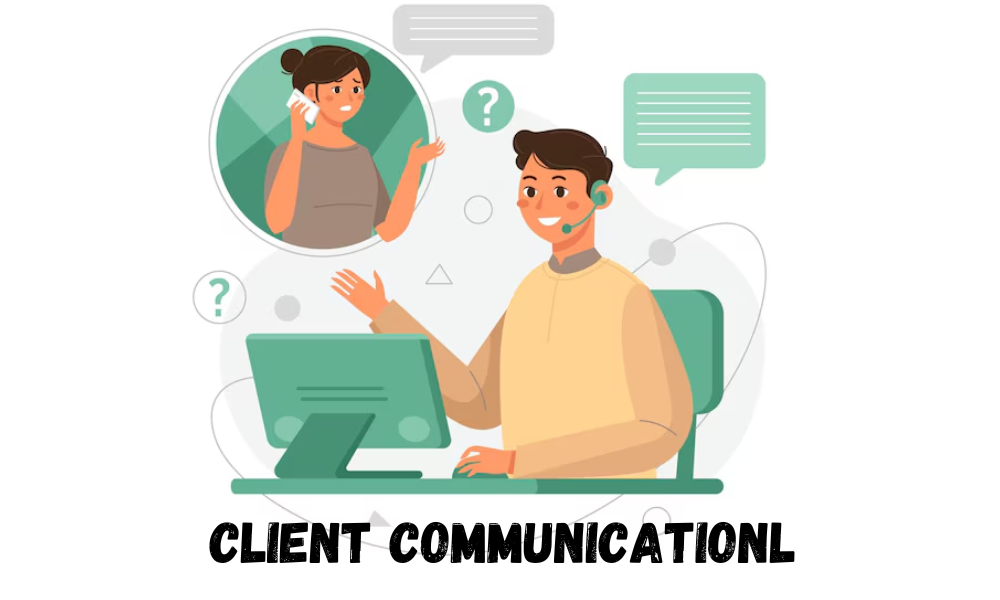
6. Price Your Services Competitively
Pricing is a significant factor in freelance graphic design. Be sure to consider variables such as experience, complexity of the project, and rates within the industry when establishing pricing. A well-formulated pricing strategy not only guarantees reasonable remuneration but also aids in establishing credibility with customers.
Pricing is the most important parameter of freelance graphic design. Charge according to your experience, job complexity, and rates in an industry while giving quotes.Popular pricing methods are:
Hourly rates.
Fixed project-based pricing.
Retainer agreements for continuous work.
When determining rates, study industry norms, evaluate the value you deliver, and factor in the work’s complexity. Don’t undervalue your services to get clients—competitive pricing should be a reflection of your experience and abilities.Also, be up-front with customers regarding pricing systems to avoid conflict. Providing a tiered series of pricing systems or package options can also serve to make clients more likely to select a service level that their budget can sustain while allowing a fair return on your work through freelance graphic design.
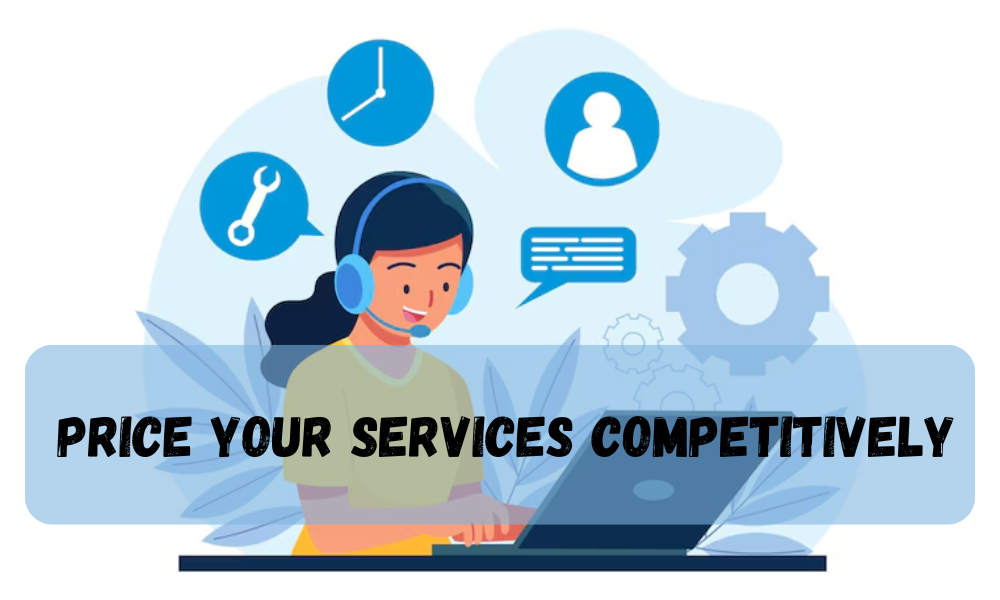
7. Time Management and Productivity
Handling several projects effectively is crucial in freelance graphic design. Utilize tools such as Trello, Asana, or Notion to prioritize tasks and achieve deadlines. Having realistic targets and sticking to a strict work routine will enhance productivity.
Time blocking is another great technique for handling workloads. By allocating specific time blocks to various tasks, like client meetings, designing, and revisions, you can increase concentration and efficiency. Task prioritization by deadline and complexity allows urgent work to be done first without sacrificing quality.
Automation also simplifies your workflow. Using templates for contracts, proposals, and invoices saves time and administration work. Integrating multiple platforms with tools like Zapier streamlines it and saves time in manual work.
Moreover, having an organized revision process can assist in handling multiple projects effectively. Establish strict guidelines for revisions, such as the number of changes permitted, to avoid unnecessary back-and-forth. Invite clients to submit consolidated feedback to eliminate miscommunication and delays.
Taking frequent breaks is essential to sustaining creativity and preventing burnout. Brief breaks between tasks enhance focus and enable new insights into design work.A balanced time management strategy guarantees long-term productivity and quality output in freelance graphic design. A balanced time management strategy guarantees long-term productivity and quality output in freelance graphic design
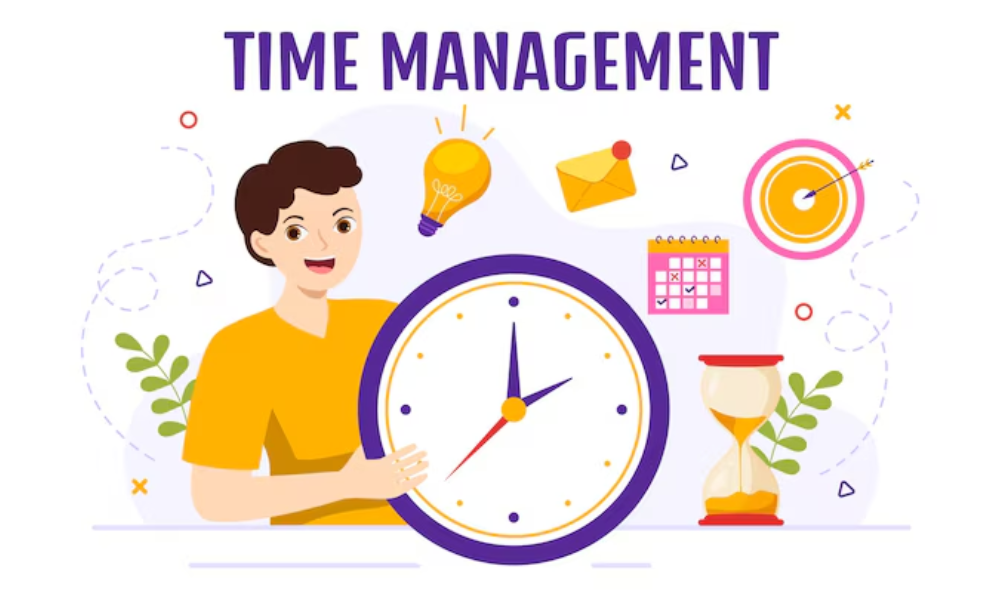
Building Strong Client Relationships in Freelance Graphic Design
1. Understand Client Expectations
Knowing client expectations is the core of a fruitful freelance graphic designing career. Holding first meetings for the purpose of talking about goals, timelines, and budgets serves to align accordingly.
2. Deliver High-Quality Work
Your freelance graphic design reputation is built on the quality of your work. Make sure every design is professional and exceeds client expectations. Providing multiple revisions and being willing to listen builds trust.
3. Be Professional
Professionalism in freelance graphic design is being dependable, delivering on time, and having a positive attitude.
Your freelance graphic design reputation is built on the quality of your work. Make sure every design is professional and exceeds client expectations. Providing multiple revisions and being willing to listen builds trust.

4. Establish Long-Term Relationships
Repeat customers are the lifeblood of a thriving freelance graphic design company. Stay in contact with previous customers, provide repeat work discounts, and check in every now and then to determine if they require new designs.
Establishing long-term relationships with clients helps build trust and makes them come back for future work. Personalized follow-ups, like holiday greetings or relevant design updates, can keep you in their minds without appearing intrusive.
Moreover, providing special offers for repeat customers or establishing loyalty programs can encourage ongoing cooperation. Delivering quality customer service and going above and beyond fosters client satisfaction, which will lead them to recommend your services to others. Regular interaction and upholding high standards guarantee long-term success in freelance graphic design.

5. Treat Problematic Clients with Dignity
Not all clients will be pleasant to work with. As a freelance graphic designer, you will have problematic situations. Be patient, listen carefully, and solve conflicts professionally. If necessary, set boundaries and adhere to agreed terms.
Selling templates, teaching online, or offering consultation services in graphic design can make your freelance life more sustainable by generating extra revenues. Design asset creation and subsequent sale of the same can give passive income a strong steady stream.
Managing expectations at the early stages of a project by employing a well-defined contract can keep misunderstandings in check. Remind the demanding client of agreed timelines and scopes politely, in case. With project management software to monitor approval and revisions, communication can become more streamlined as well as time-efficient for a project.
If a situation becomes unresolvable, it’s alright to professionally withdraw from the project but still be respectful. Being able to handle client issues with poise and professionalism will assist you in creating a viable and successful freelance graphic design business.

Scaling Your Freelance Graphic Design Business
1. Diversify Your Skillset
To compete in freelance graphic design, diversify your skill beyond core design. Acquire skills like UX/UI design, animation, video editing, or digital marketing to provide more services and get a better variety of clients.by broadening your skills, you become an all-around designer with the capacity to manage everything in visual communication. This doesn’t only increase your worth for clients but your potential earnings too.
Moreover, keeping oneself current with industry trends and latest design tools is important. Freelance graphic design has always been evolving, with new software packages, methods, and design philosophies developing on a regular basis. It can be useful to invest in online training, attending workshops, and engaging in design challenges to further hone your skills and keep yourself competitive in the market.
Most of the clients want designers to come up with all-round solutions ranging from web and branding design to motion graphics and digital marketing material. With a wide skill set, you can undertake larger projects, engage a varied range of clients, and be branded as one-stop for all your design needs.
As a result, adding to your area of expertise not only keeps you ahead in freelance graphic design competition but also paves the way for professional success and long-term growth.

2. Spend on Marketing
Good online visibility is critical for freelance graphic design. Spend on online marketing through:
Creating targeted social media campaigns.
SEO optimizing your website.
Creating blogs and case studies to highlight your expertise.
Participating in online forums.
3. Work Together with Other Freelancers
Working together can present new avenues in freelance graphic design. Working with web developers, marketers, or content writers can enable you to provide end-to-end solutions to clients and boost your income.
Collaboration can bring new doors of opportunities in freelance graphic design. Joining hands with web developers, marketers, or content creators can enable you to provide end-to-end solutions to clients and enhance your revenue. With collaboration with other professionals, you can extend your service scope, offering clients complete branding and marketing packages rather than just design. For example, collaborating with a web developer enables you to package website design and development as a bundled service, which makes your proposal more appealing to prospective clients.
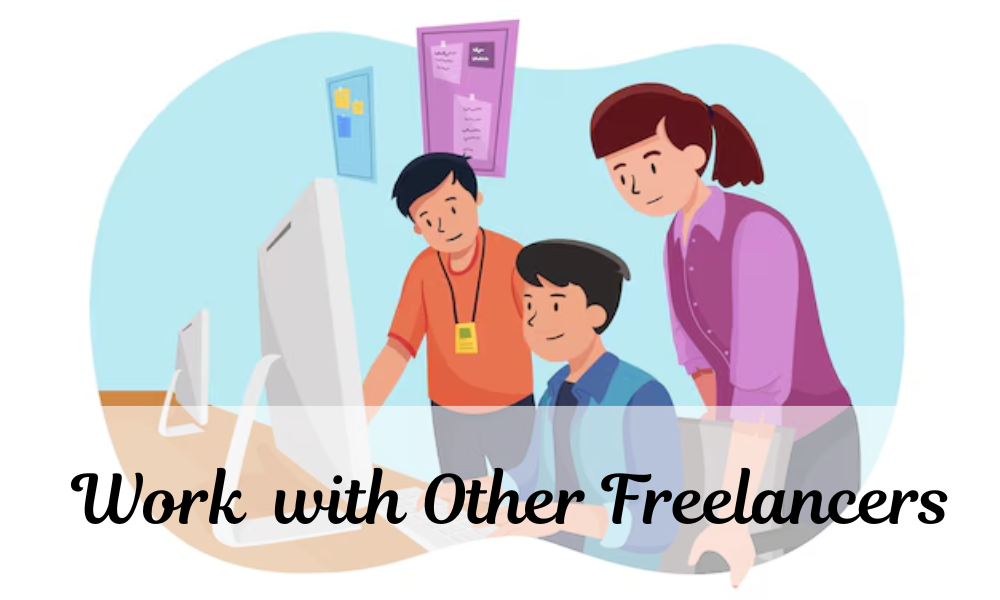
In addition, teamwork can spur creativity and innovation in freelance graphic design. Other creatives give you different approaches, skills, and inspiration, which make the quality of work better. Teamwork with fellow freelancers also boosts referrals as well as higher projects that are not attainable when you are working independently.
Plus, working with marketers can enable you to develop designs that fit proven marketing tactics so that your efforts not only become visually appealing, but they actually work as intended in engaging, converting, etc.By entering strategic alliances, you are establishing yourself as a designer with flexibility in providing end-to-end solutions. This not only enhances your value in the market but also extends your professional circle, which will result in regular work and sustained success as a freelance graphic designer.
4. Think About Passive Income Streams
Income diversification can bring stability to freelance graphic design. Think about selling design templates, building online courses, or providing design consultations as a passive income stream.
Diversifying sources of income can offer stability in freelance graphic design. Depending on projects alone from clients can create income fluctuations, so having multiple revenue streams keeps one financially stable.
Think about selling design templates on marketplaces such as Etsy, Creative Market, or Adobe Stock, where companies and entrepreneurs are always in need of quality assets.
Social media graphics templates, business cards, presentations, and website UI components can earn passive income in the long run.
Another profitable idea is selling online courses or providing design workshops With the popularity of e-learning, most future designers are willing to pay for properly structured courses that will instruct them in vital skills such as Adobe Photoshop, Illustrator, or branding. Platforms such as Udemy, Teachable, and Skillshare provide designers an opportunity to monetize their skills and sell to a world-wide audience.
Moreover, design consulting services can prove to be rewarding. Most companies require specialized guidance on branding, color palette, typography, and general visual identity before they hire a designer for full-length work. Offering consultations can make you an expert in the industry and result in long-term client relationships. By having multiple sources of income, you not only build financial stability but also create a brand outside of just client work. This will enable you to grow your freelance graphic design business while still having the flexibility and creativity that come with being your own boss.
Kickstart your freelance graphic design career! Learn how to build your brand, attract clients, and grow your business today
Conclusion
A successful freelance graphic design career takes commitment, talent, and effective client relationships. The market is extremely competitive, and to excel, you need to produce top-notch work and have a professional and streamlined workflow. Creating a distinctive design aesthetic and niche area of expertise can make you attract the right kind of clients and become a popular designer in the industry.
By constantly developing your skills, marketing yourself well, and being professional, you will be able to build a successful business. Investing in personal branding like a good website and social media presence will be able to present your work to more people. You can also use client testimonials and case studies to be able to prove your credibility and get more projects



